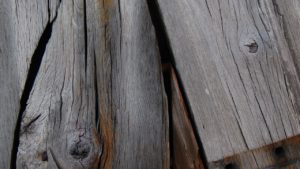Has Wet Weather Left Your Property Vulnerable to Wet Rot ?
You may associate timber rot, dry or wet, with the cool air, condensation and dampness that exists in the colder months, but this is only partly correct; it is wise to be on the alert during every season to the possibility of a wet rot issue presenting itself.

When a 50% moisture level is present, often due to poor ventilation, a plumbing issue, blocked guttering, a leaking roof, window or door, even in the middle of a hot summer’s day, a property’s timber can be under attack. Given the right conditions the airborne spores which create wet rot can embed and fruit as they spread. This potentially causes serious and sometimes structural risks.
Wet rot is also known as cellar fungus, in Latin, Coniophora Puteana; fungal growth, discoloured, weak and damp spongy timber accompanied by a musty smell are common signs.
Being proactive and checking for possible blockages and repairs is a key way to protect the timber, and if you find fungi, please don’t ignore it.
Always Contact Timber Specialists
If you suspect a wet rot problem, please call in proven experts at the earliest opportunity.
Wet rot treatment must be administered by timber specialists, like the team at the renowned Thames Valley Timber Treatment, and a full initial survey carried out to establish whether it is wet rot or another issue, and its severity.
Please do not guess or use DIY treatments, these can prove less effective, in the worst cases, a waste of time and money. It’s likely that a maintenance, insurance or mortgage agreement stipulates that only accredited professionals are acceptable when treating wet rot.
You may not welcome the fee for professional wet rot treatments, but timber specialists have the qualifications, experience, under license treatments and partnerships with industry treatment manufacturers which secure their …
Has Wet Weather Left Your Property Vulnerable to Wet Rot ? Read More
